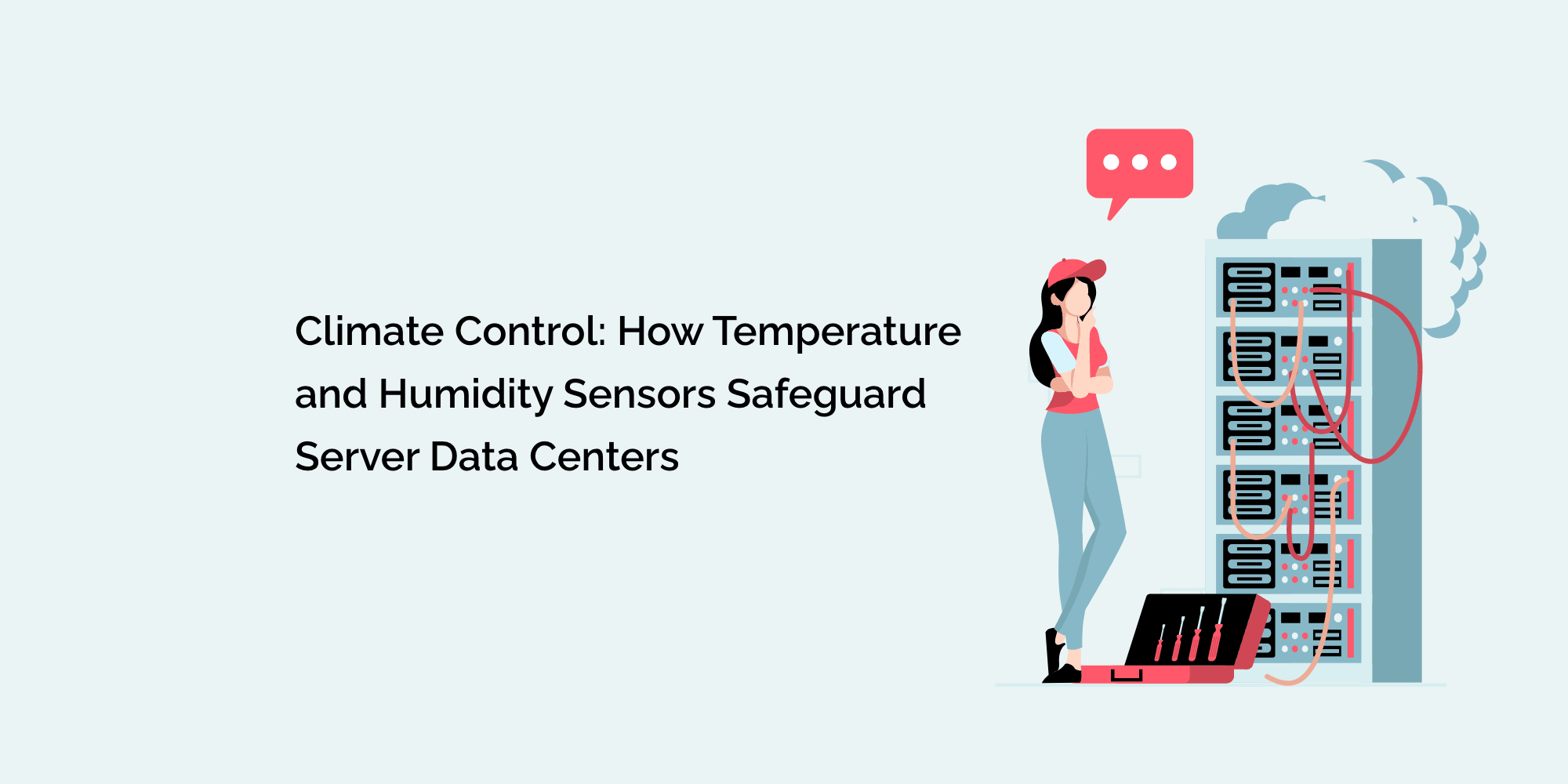In the digital age, data centers are the beating heart of businesses, housing critical information that keeps organizations running smoothly. The proper functioning of these data centers is contingent on maintaining optimal environmental conditions. Temperature and humidity are two crucial variables that can make or break a data center's performance. To ensure the security and integrity of your data, temperature and humidity sensors play an indispensable role. In this comprehensive guide, we will delve into the world of data center climate control, exploring how these sensors are the silent heroes safeguarding your invaluable server data.
The Significance of Data Centers
Understanding the pivotal role data centers play in today's tech-driven world:
- Defining Data Centers: What are data centers, and why are they indispensable?
- The Digital Era: How data centers power our online world.
- The Vulnerability of Data: Recognizing the need for robust security measures.
The Sensor Revolution
An in-depth exploration of the role temperature and humidity sensors play in data center climate control:
- Sensor Technology Demystified: Understanding the fundamentals of sensor technology.
- Types of Sensors: An overview of temperature and humidity sensors.
- The Mechanics of Sensors: How do these sensors work their magic?
The Critical Role of Climate Control
Why maintaining ideal temperature and humidity levels is mission-critical for data centers:
- Temperature: A Silent Threat: How temperature fluctuations can damage server hardware.
- Humidity Matters: Why getting the humidity levels right is crucial for data centers.
- The Goldilocks Zone: Defining the ideal conditions for data center climate control.
Sensor-Driven Climate Management
Learning how temperature and humidity sensors enable precise climate control in data centers:
- Automated Climate Regulation: How sensors trigger HVAC systems for real-time adjustments.
- Optimizing Energy Efficiency: Using sensors to enhance energy efficiency in data centers.
- Proactive Disaster Prevention: How sensors act as early warning systems.
Disaster Avoidance in Data Centers
Understanding how sensor technology prevents costly data center outages:
- Overheating Dangers: How sensors prevent overheating and server shutdowns.
- Humidity Hazards: Preventing equipment corrosion and electrical failures.
- Fire Detection: The role of sensors in fire prevention and protection.
Real-time Monitoring and Alerts
Exploring the significance of real-time data monitoring and notifications:
- Continuous Monitoring: How sensors provide real-time environmental data.
- Immediate Alerts: The importance of timely notifications for disaster prevention.
- Remote Monitoring: Managing data center conditions from anywhere with mobile apps.
Setting Up Your Sensor Network
A step-by-step guide to implementing temperature and humidity sensors in your data center:
- Choosing the Right Sensors: Selecting sensors tailored to your data center's needs.
- Installation and Calibration: Proper placement and setup for accurate readings.
- Integration with HVAC Systems: Connecting sensors to climate control systems.
Precision Data Center Management
Understanding how sensor technology allows for precision data center management:
- Customized Climate Control: Tailoring conditions to server and data storage needs.
- Proactive Equipment Care: Preventing hardware failures through data-driven decision-making.
- Efficiency through Data: How sensor data contributes to optimizing data center operations.
Sustainability and Energy Efficiency
Exploring how sensor-driven practices lead to more eco-friendly data centers:
- Resource Conservation: How sensors contribute to reduced energy and water consumption.
- Reducing Carbon Footprint: Minimizing the environmental impact of data centers.
- Sustainable Data Centers: Strategies for responsible and eco-conscious data center management.
Success Stories in Data Center Climate Control
Real-life examples of data centers that have thrived with the integration of sensor-driven climate control:
- Mission-Critical Success: Stories of data centers that avoided disasters through sensor technology.
- Cost Savings: Instances where sensor-driven practices led to reduced expenses.
- Business Continuity: Experiences of organizations that safeguarded their digital assets with sensors.
The Future of Data Center Climate Control
Glimpsing into the future of data center management with sensor-driven technology:
- Advancements on the Horizon: How technology will continue to shape data center climate control.
- Enhancing Data Security: The promise of more robust and secure data centers.
- Training Tomorrow's Guardians: Preparing the next generation of data center professionals for a sensor-driven future.
Conclusion
Temperature and humidity sensors are the unsung heroes of data center protection. In an era where data is the lifeblood of businesses, the importance of safeguarding your data center cannot be overstated. With sensor technology, you can ensure that your data center operates seamlessly, your digital assets remain secure, and your business thrives even in the face of environmental challenges. Your data center is not just a room filled with servers; it's the nucleus of your organization's operations, and it deserves nothing less than the best protection. As you embrace sensor technology, you'll find that your data center is not just secure; it's future-proofed for the ever-evolving demands of the digital world








